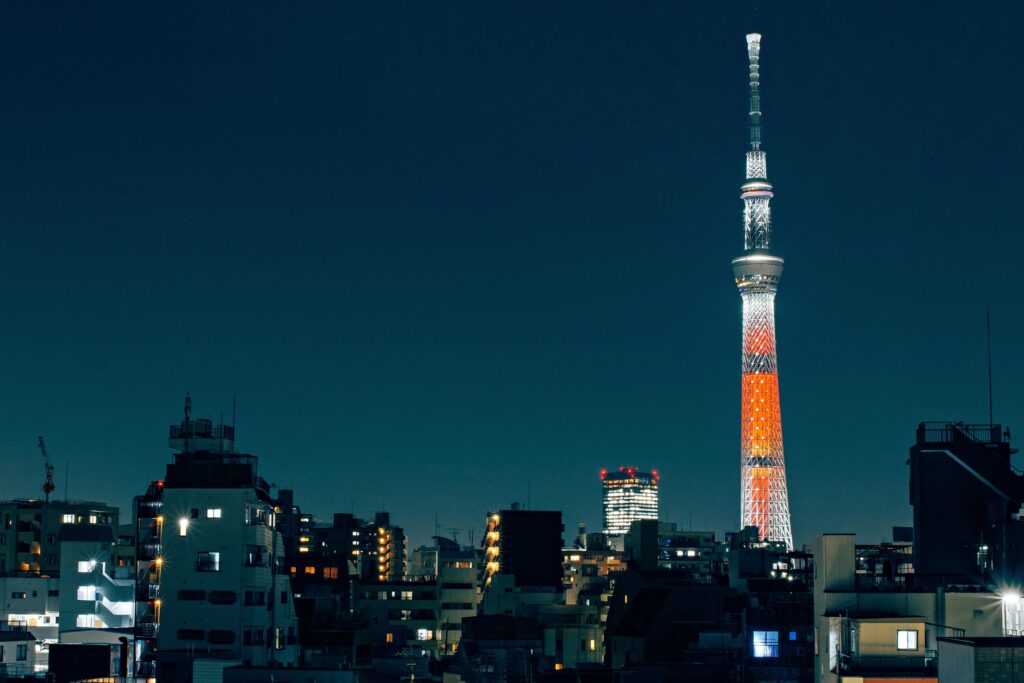Tokyo, a name synonymous with innovation, vibrant culture, and a fascinating blend of old and new, stands as a global powerhouse. But beyond the bright lights and towering skyscrapers, what truly defines this incredible metropolis? Let’s dive into the essence of Tokyo.

1. City Overview
Population: As of 2025, the Greater Tokyo Area boasts a population of approximately 37.03 million, while the Tokyo Metropolis (Tokyo-to) itself is home to around 14.19 million. This makes it one of the most densely populated and expansive urban areas in the world.
Area: The entire Tokyo Metropolis covers an area of about 2,190 km², with its core 23 special wards encompassing a more compact 627.5 km².
Language: Japanese (standard) is the primary language, though some local dialects can still be heard in areas like Odaiba and the Tama region.
Religion: The religious landscape is unique, with Shintoism at 69% and Buddhism at 67%. It’s common for people to practice both religions simultaneously. Christianity accounts for about 1.5%, with other religions also present.
Timeline: Human settlements in the Tokyo area date back to prehistoric times (around 1000-500 BCE). In 1603, it became the political center as “Edo.” Following the Meiji Restoration in 1868, the capital was moved here, and it was renamed Tokyo, becoming the official capital of Japan.
2. History 🕰️
Prehistoric to Ancient: Evidence of Jomon and Yayoi period settlements exists, and the area was a significant center for shrines.
Edo Period (1603–1867): Under the Tokugawa Ieyasu shogunate, Edo flourished as the capital and grew into one of the world’s largest cities. Notable events include the Great Fire of Meireki in 1657, which devastated much of the city.
Post-Meiji Restoration: In 1868, the imperial court moved from Kyoto to Edo, which was then renamed Tokyo. This era saw rapid modernization and Westernization, with the swift introduction of Western-style architecture, education, and industries.
20th Century: Tokyo faced immense challenges, including the Great Kanto Earthquake in 1923 and the devastation of World War II, culminating in Japan’s defeat in 1945. Despite these setbacks, the city embarked on a remarkable journey of reconstruction and high economic growth, particularly catalyzed by the 1964 Tokyo Olympics.

3. Culture
Language & Dialects: While standard Japanese is now established, historical dialects like Yamanote and Shitamachi once existed.
Religious Practices: A unique blend of Shinto and Buddhist practices is central to daily life, with visits to shrines and temples being commonplace.
Modern Culture: Tokyo is a global hub where tradition and modernity coexist seamlessly, driving vibrant industries in art, design, fashion, animation, and gaming. Areas like Asakusa and Akihabara perfectly exemplify this harmony of ancient traditions and cutting-edge technology.
4. Geography
Location: Tokyo is situated in the eastern part of Honshu, bordering the northern part of Tokyo Bay, and is influenced by a Pacific climate.
Urban Structure: The city is characterized by a high-density urban core of 23 special wards, complemented by satellite cities and more natural environments in its western and island regions.
Climate: Summers are hot and humid, while winters are relatively mild.
5. Environment
Urban Green Spaces: Despite its high population density, Tokyo features numerous parks, valleys, and even some island areas that contribute to its mixed green spaces. Policies are actively implemented to preserve these vital green areas.
Urbanization Issues: The city has robust infrastructure in place to prepare for and mitigate the risks of natural disasters like earthquakes and tsunamis, as well as addressing urban challenges such as air and noise pollution.
6. Economy
World’s Largest Metropolitan Economy: The Greater Tokyo Area boasts a GDP of approximately US$2 trillion (2021), ranking as the second-largest in the world.
Industry Distribution: The city’s economy is driven by finance, manufacturing, high-tech industries, and a robust service sector. It’s a magnet for global corporate headquarters and foreign companies.

7. Landmarks & Hotspots
Traditional Sites: Don’t miss Senso-ji Temple in Asakusa and the historic grounds of the former Edo Castle.
Urban Centers: Iconic spots include the bustling Shibuya Crossing, the impressive skylines of Shinjuku and Roppongi, and the electronics paradise of Akihabara.
Leisure & Cultural Spaces: Popular destinations for relaxation and culture include Ueno Park, Roppongi Hills, and the towering Tokyo Skytree.
Infrastructure: Tokyo’s excellent transportation network, including JR lines, the Tokyo Metro, and the Shinkansen hub, seamlessly connects the city and the entire nation.
Emerging Areas: Odaiba, an artificial island, has become a popular waterfront shopping and entertainment destination.
✨ Summary
Tokyo is a global metropolis built on a rich history, where tradition and modernity, nature and urban life, harmoniously intertwine. While maintaining an economy centered on finance, culture, and technology, Tokyo is also committed to building a sustainable city model that emphasizes disaster preparedness and green space preservation.
